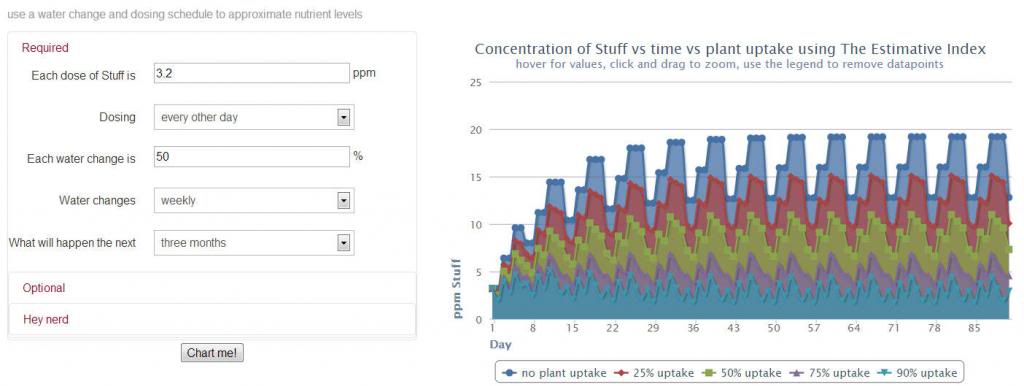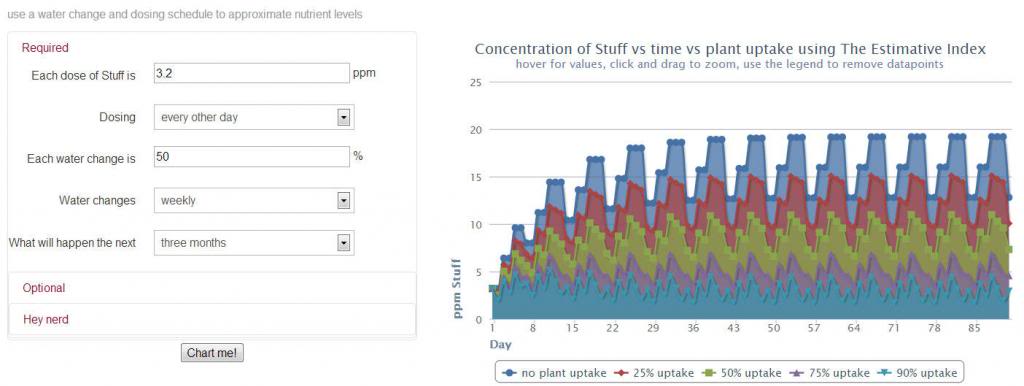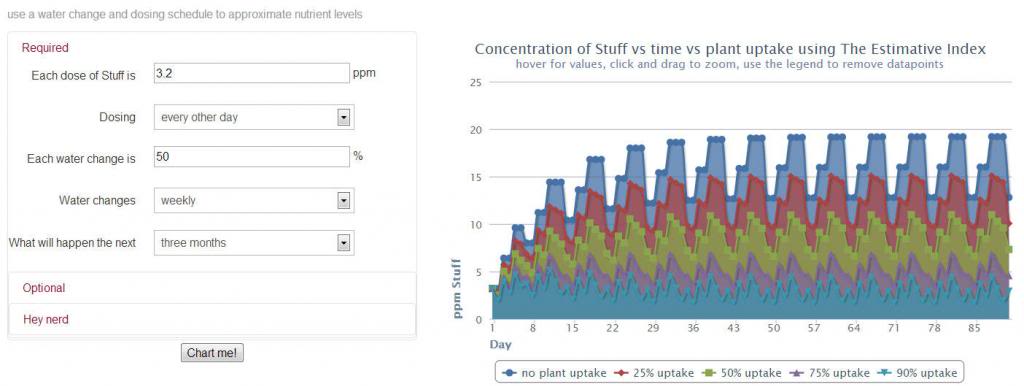PerfectDepth
Aquarium Advice FINatic
- Joined
- Jul 9, 2013
- Messages
- 607
I will research how to do this.
I followed these instructions:
Calibrating Test Kits - for non-Chemists
I will research how to do this.
I followed these instructions:
Calibrating Test Kits - for non-Chemists
Science aside.. i don't dose any kno3 in any of my planted tanks, never have.. i do stock on the heavy side and nitrates are always above 10-15ppm.. none of.my plants show any signs of nitrate deficiency..
Sent from my SAMSUNG-SM-G900A using Aquarium Advice mobile app
I mix KNO3 separately (PPS-Pro), have a light to medium stocked tank, medium lighting and dose nitrate maybe 2-3 times a week. Nitrates are usually between 10-20 ppm. When I was dosing daily, nitrates would get out of control (40-80 or more).
Sent from my iPhone using Aquarium Advice
Why do people assume that the N part in NPK means means nitrate? It means nitrogen, a form of nitrogen.
The plants are probably utilising ammonia in conjunction with nitrate as it becomes available.
If the nitrates where a problem the tank would consistently read 0 and the plants would show deficiencies no?
Op the same thing happened to me. I'm going to start dosing again tonight but I'm going to dose dry rather than mixing in bottles to see if that helps. That way you can just choose not to add any of any fert if it is excessively high rather than mixing more bottles or wasting ferts by pouring them down the drain to pre mix again. That same calculator gives measurements for dry ferts also. You just need a decent set of scales with a .00 resolution.
Sent from my iPhone using Aquarium Advice
Not necessarily. The nitrogen cycle could be providing measurable nitrates in the morning, but then they're bottoming out before the end of the photoperiod.
Yeah, I am doing to bottle method because of the time to measure out each morning on a scale before work. I guess I could just get my KH2PO4 and K2SO4 in the bottle, and just manually dose KNO3 when needed (if ever).
Well in that case you would see noticeable deficiencies which would lead to a sample being taken at photo period end. Either In my opinion I think nitrates would be lower down on the scale of things to worry about.
Right, but the whole point of the EI method is to eliminate deficiencies as a variable completely. With weekly 50% changes, excess is never a problem as long as you're dosing a reasonable amount for your tank (not everyone will need the full EI schedule obviously). Personally, I would much rather dose enough that I can just forget about watching for, and then trying to correct deficiencies altogether. That way, if something is off, there's no guessing. I'll know it's most likely a co2 issue.
That's fineI'm not arguing with EI method. Just just trying to tackle the 60-80ppm nitrate dilemma. Since the forum general consensus for nitrates is usually 10-20ppm possible even 40 it seems that is fine when plants are involved. If the plants are obviously using the nitrates then that is not a problem but when they are climbing higher and higher by the week then I'm not so sure.

Again, I'm assuming weekly 50% water changes here: Climbing higher and higher by the week only continues to the point at which the amount you're adding becomes equal to the amount being consumed/removed. Once you hit this plateau, it should no longer climb any higher (as long as growth rate remains uninhibited by other factors).
Here's an example of a chart for visual reference, notice how it plateaus close to 20 ppm:

Again, I'm assuming weekly 50% water changes here: Climbing higher and higher by the week only continues to the point at which the amount you're adding becomes equal to the amount being consumed/removed. Once you hit this plateau, it should no longer climb any higher (as long as growth rate remains uninhibited by other factors).
Here's an example of a chart for visual reference, notice how it plateaus close to 20 ppm:

